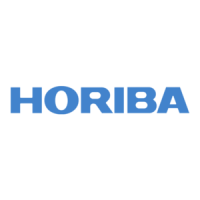What to do if the temperature of horiba MV-2000 MV does not stabilize?
- EElizabeth CastilloAug 13, 2025
If the temperature of the MV (Mixing Valve) is unstable, it could be due to several reasons. First, the PID constants of the temperature regulators may be improper; perform auto-tuning under working conditions. Second, a short circuit in the heater power supply could be the cause; turn off the power and inspect the heater power line. Third, check for thermocouple contact failure by examining the connection of the thermocouples to the temperature regulators and MV. Finally, if the control cycle of the temperature regulators is too long, use temperature regulators with a control period of 1 second or less, or adjust the setting accordingly.

